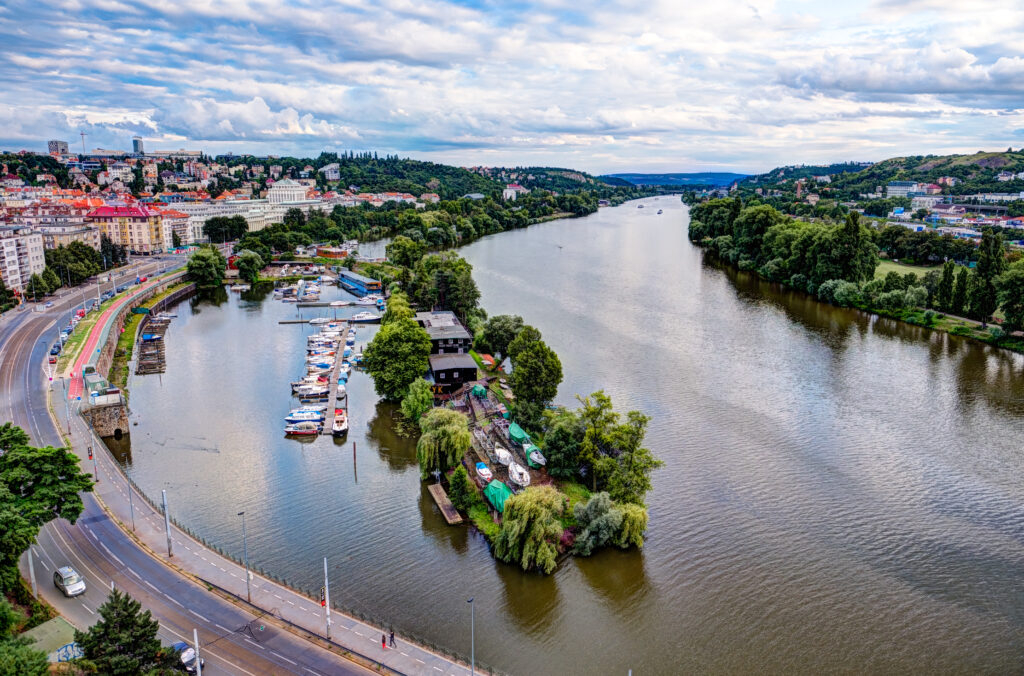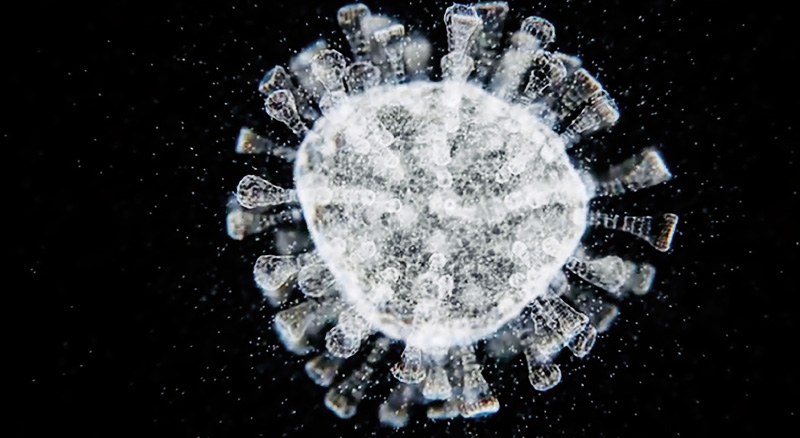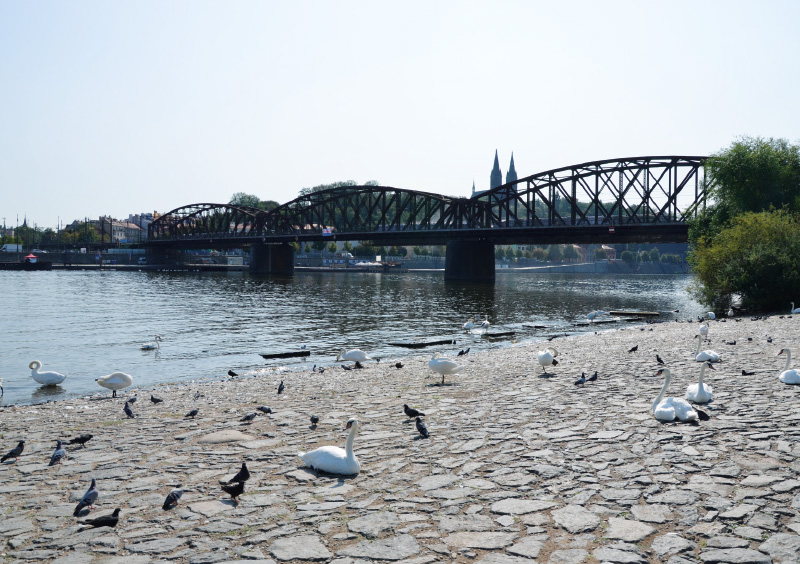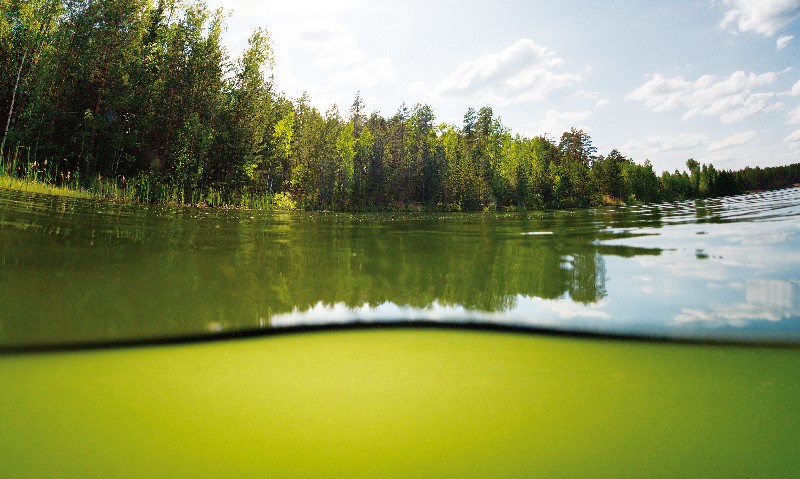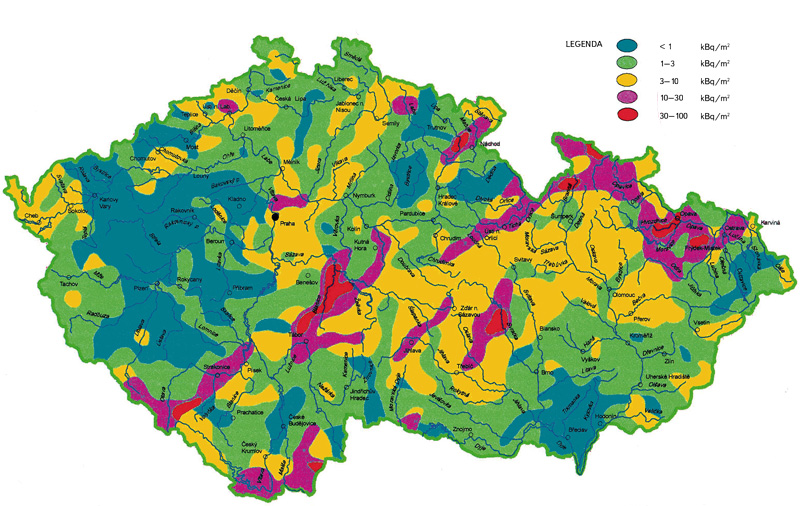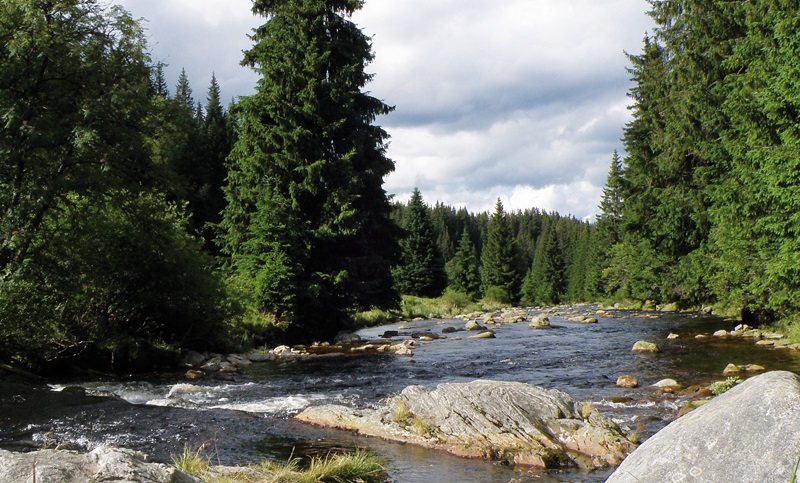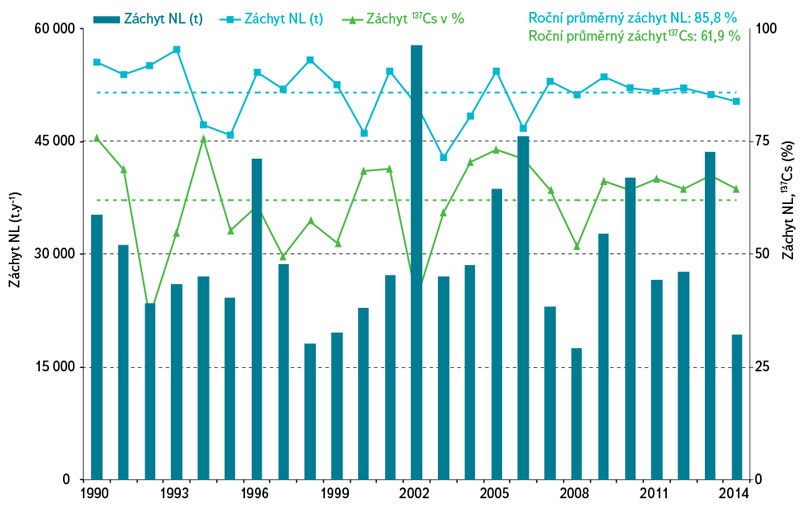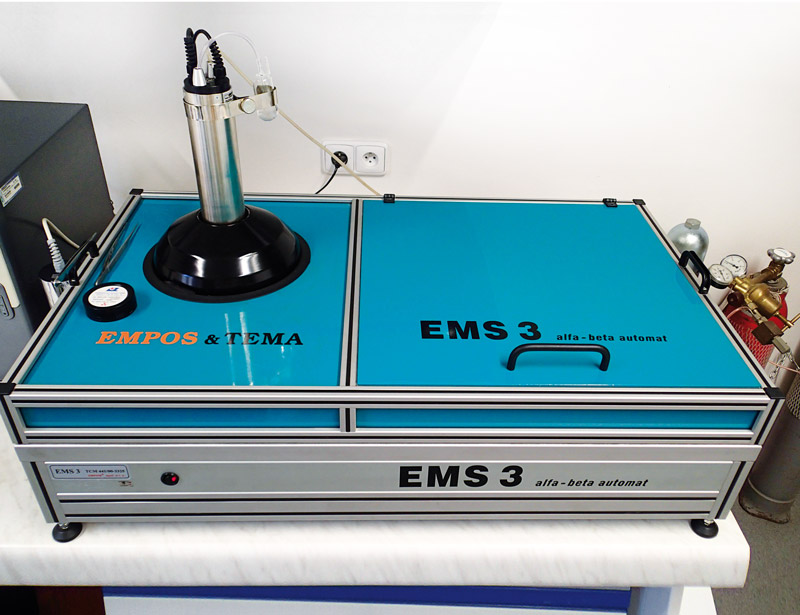Use of SARS-CoV-2 virus monitoring in wastewater from WWTP of various categories for epidemic surveillance in the Czech Republic
The principle of wastewater diagnostics is a suitable complementary approach that can help to gain epidemiological information on a large part of the population in a non-invasive way. The course of the pandemic spread of the new coronavirus (SARS-CoV-2) has been showing a cyclical course of successive waves of Covid-19 since 2020. For this model, a systematic detection of the occurrence of its agent in wastewater is a very effective approach.
Vertical distribution of radioactive caesium-137 in soil
In the past, the environment of the Czech Republic was contaminated with anthropogenic radionuclides as a result of atmospheric nuclear weapon testing and the Chernobyl accident. The paper summarises results of vertical migration of 137Cs in soil in selected sites, performed as part of collecting data for ground water vulnerability assessment. Three sites with a different land cover were included (forest, meadow and arable land). In order to determine vertical migration of anthropogenic radionuclides, soil samples were collected up to the depth of 100 cm and subsequently analysed using the gamma-ray spectrometry.
Prediction model of water quality around Prague
This article is available in Czech only. For translation or more information on this topic, please contact author. Souhrn V poslední době se velmi diskutuje – a to nejen mezi odbornou veřejností – o dopadech změny klimatu na vodní režim v přírodní krajině. Řešení OP Praha – pól růstu se zaměřilo i na krajinu… Read more »
Monitoring of the coronavirus SARS-CoV-2 in wastewater – what the monitoring has shown us so far and where it is headed
Since April 2020, the presence of the coronavirus SARS-CoV-2 in wastewater has been monitored at TGM WRI, p.r.i. The method of detection is similar to that of clinical samples, ie the presence of a specific fragment of viral RNA is detected by PCR.
Impact of the Nuclear power plant Temelín on concentration of selected radionuclides in the hydrosphere
The paper presents results and interpretation of long-term monitoring of occurrence and behaviour of selected radionuclides in the vicinity of the Temelín Nuclear Power Plant (Temelin NPP).
Coronavirus SARS-CoV-2 in surface and wastewater
The paper provides actual clear information about viruses and coronaviruses, including SARS-CoV-2, the possibility of contamination of surface water and wastewater by this virus.
Water recreation in Prague from history to the present days
Náhled do historie ukázal, že rekreace u vody, jako záliba k trávení volného času, byla odedávna rozšířena i v Praze, kde byly velmi oblíbené, dnes již zaniklé, říční plovárny. Na historický průzkum navázal v projektu „Možnosti vodní rekreace na území hlavního města Prahy (od historie po současnost)“ zcela aktuální průzkum potenciálních možností rozšíření míst ke koupání a rekreace u vody na území Prahy.
Determination of low level tritium concentrations for tritium tracing applications
Past tests of nuclear weapons in the atmosphere, nuclear energy facilities and tritium of natural origin are main sources of tritium in the environment. Thanks to its presence in environment and its favourable properties, tritium is used as a radiotracer.
Development of selected radionuclides in surface water in the vicinity of the Temelín Nuclear Power Plant in the period 1990–2016
The paper presents results and interpretation of long-term monitoring of occurrence and behaviour of radioisotopes 3H, 90Sr and 137Cs in surface water in the vicinity of the Temelín Nuclear Power Plant. 3H, 90Sr and 137Cs originate predominantly from residual contamination due to atmospheric nuclear weapons tests and the Chernobyl disaster in the last century.
Cooperation of Water Research Institute and Povodí companies, state enterprise within the framework of radiation monitoring network of the Czech Republic
The paper sums up the legislative framework and cooperation of TGM Water Research Institute and Povodí companies, state enterprises.
Concentration of artificial radionuclides in hydrosphere affected by Temelín Nuclear Power Plant
Temporal and spatial changes in concentrations of selected radionuclides (tritium, radiostrontium and radiocaesium) were assessed in the parts of the Vltava and Elbe river basins affected by the operation of the Temelín Nuclear Power Plant.
Rapid method of determination of gross beta activity
In connection to the assessment of a radiological event, the procedure of rapid determination of the gross beta activity in water was proposed and validated. In cooperation with the radiological laboratories, the method has been tested in practice.


